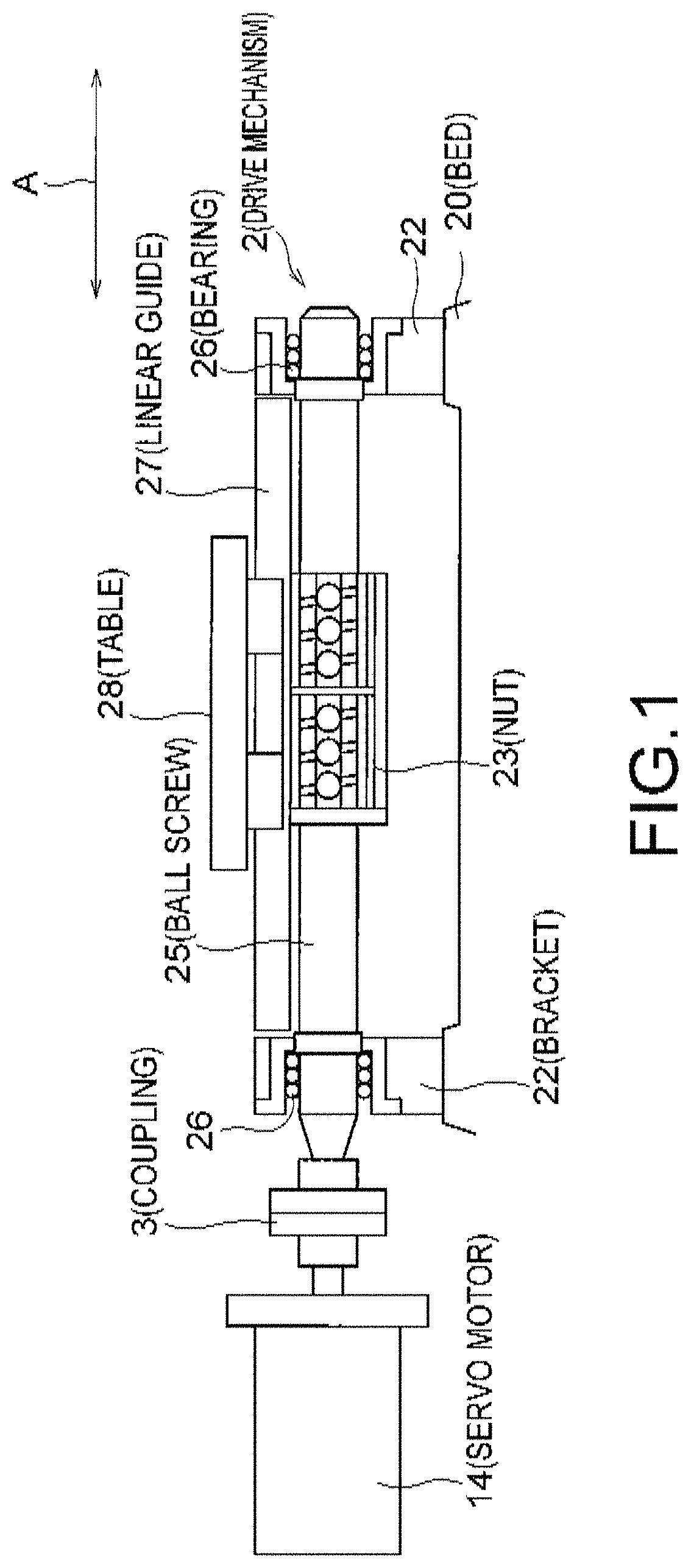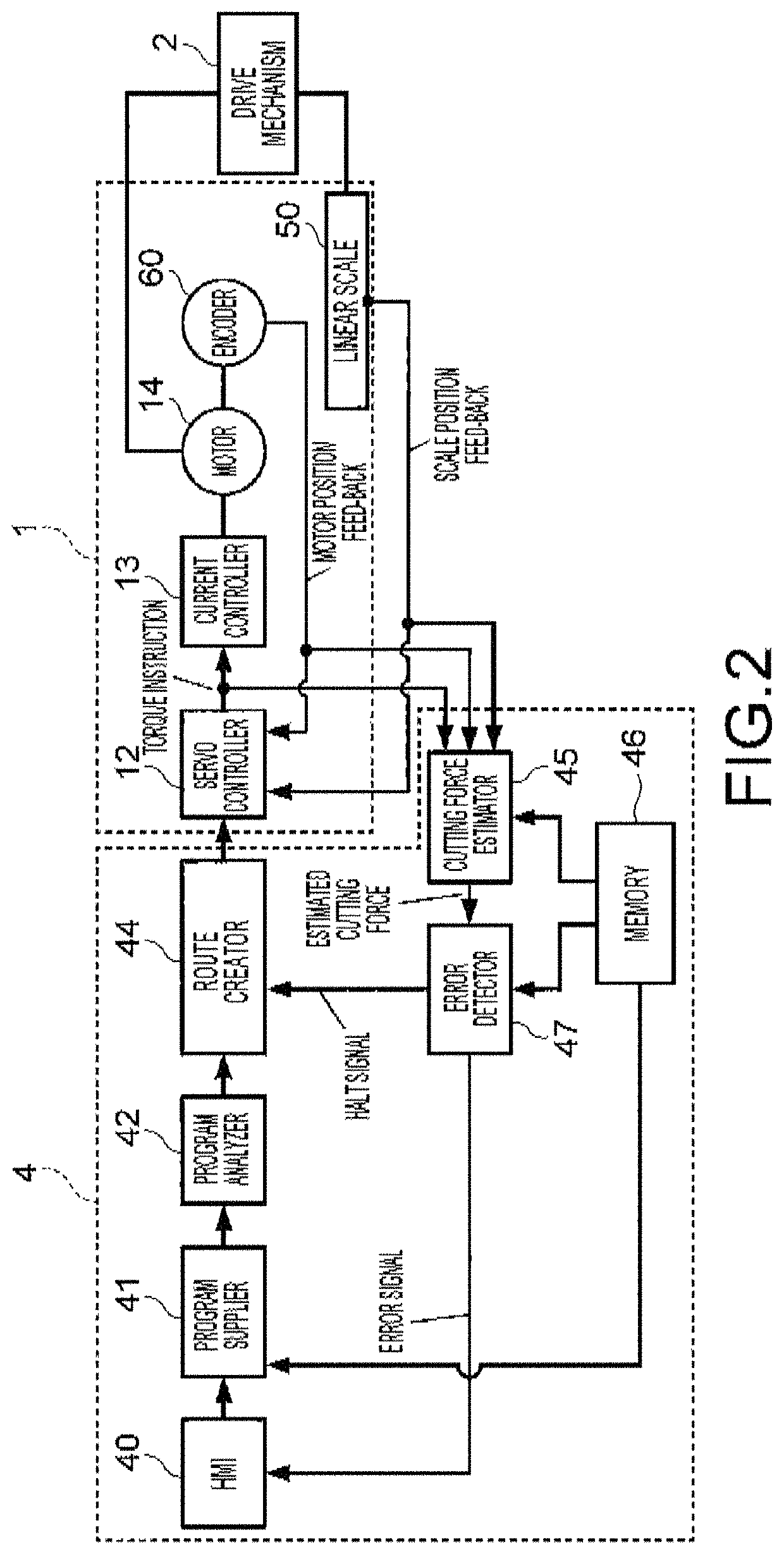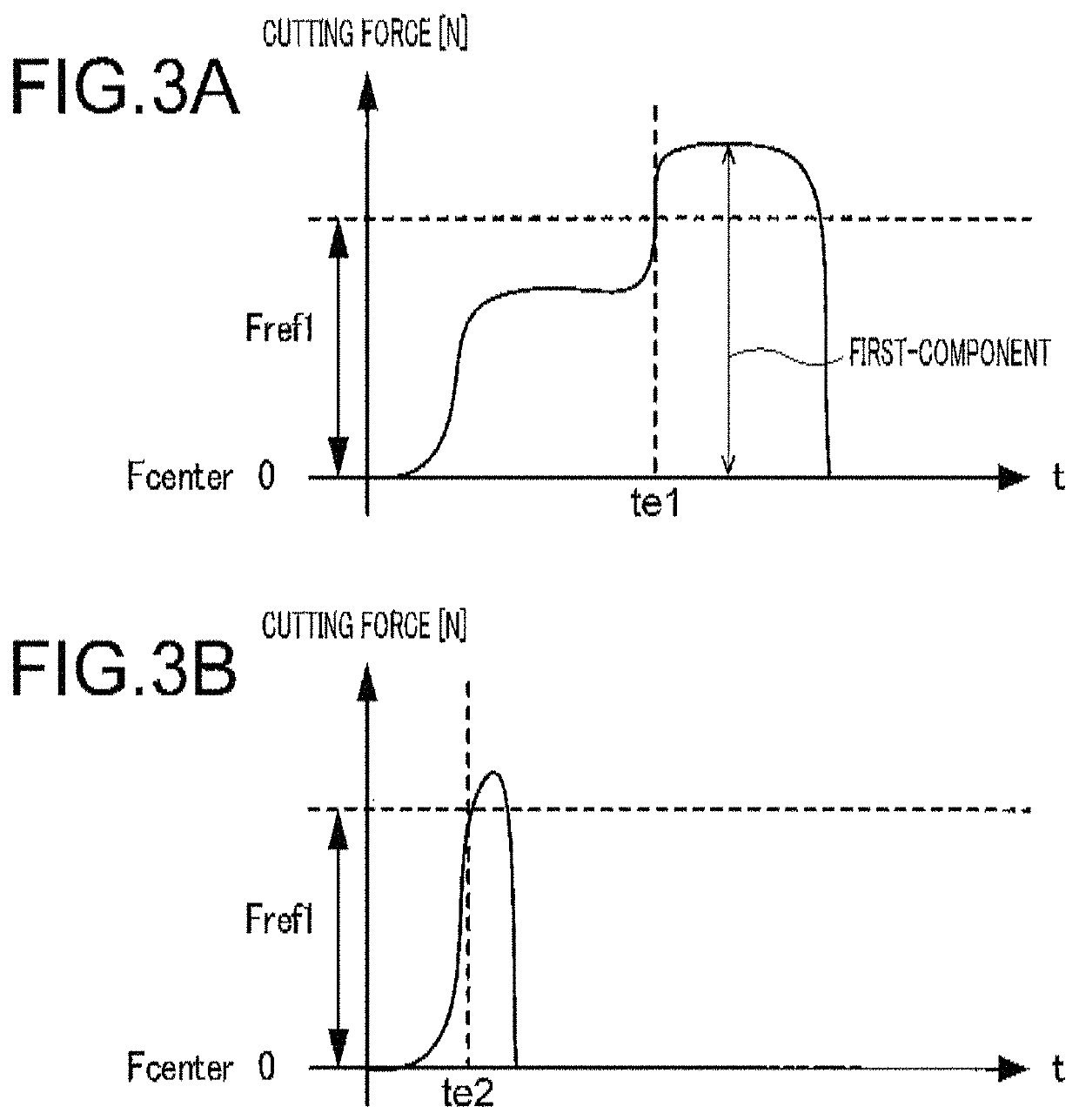Industrial machinery and control method thereof
a technology of industrial machinery and control methods, applied in the direction of computer control, program control, instruments, etc., can solve the problems of inability to detect tool failure accurately with the torque of the main shaft, bulky and expensive industrial machinery, and difficulty in detecting tool failures
- Summary
- Abstract
- Description
- Claims
- Application Information
AI Technical Summary
Benefits of technology
Problems solved by technology
Method used
Image
Examples
first embodiment
FIG. 1 is a diagram showing an example of the configuration of a servo motor 14 and a drive mechanism 2 of an industrial machinery according to a first embodiment. The servo motor 14 is coupled with the drive mechanism 2 via a coupling 3. The drive mechanism 2 is provided with a bed 20, brackets 22, a nut 23, a ball screw 25, bearings 26, a linear guide 27, and a table 28.
The bed 20 is fixed to a main frame of the industrial machinery. On the bed 20, the other components of the drive mechanism 2 are mounted. The brackets 22 are fixed on the bed 20 to support the ball screw 25 on both sides via the bearings 26. The ball screw 25 is coupled with the servo motor 14 via the coupling 3 so as to rotate with the rotation of a shaft of the servo motor 14. The nut 23 has a screw hole to be engaged with a screw portion of the ball screw 25. The nut 23 can move in an axial direction of the ball screw 25, as the ball screw 25 rotates. The table 28 as a control target is fixed to the nut 23 and ...
second embodiment
FIG. 8 is a graph showing an example of a tool failure determination method according to a second embodiment, the ordinate showing cutting force including the second component and the first component, and the abscissa showing time. It is a precondition that the drive mechanism 2 has a horizontal axis, with zero (N(Newton)) set at the origin Fcenter of the cutting force. In the case where the drive mechanism 2 has the axis of gravity, the origin Fcenter may be offset, as explained with reference to FIGS. 4A and 4B. Thus, the explanation of the case with the axis of gravity is omitted here.
For example, a tool having at least one blade, such as an end mill, cuts the same part of work by the number of blades per rotation. When the number of blades is M and the rotation speed at which the tool rotates is N (times of rotation / min), the second component of the cutting force has a waveform with a frequency of P=M×N / 60 (Hz) during processing, as explained above. Therefore, the error detector...
third embodiment
In the first and second embodiments, the NC apparatus 4 performs tool failure detection using the first component of the cutting force. Different from this, in the third embodiment, the NC apparatus 4 performs tool failure detection using the second component of the cutting force. The cutting force may be calculated in the same manner as explained in the first or second embodiment.
The second component of the cutting force will be explained. If any one of the tool blades is chipped way or worn away, there is a bigger change in the second component than in the first component, in the cutting force. For example, if the tool has many blades and, if one of the blades is chipped way, although there is a small change in the cutting force of the entire tool, there is a big change in the cutting force of the chipped blade. In this case, it is preferable for the NC apparatus 4 to use the second component that represents each blade cutting force, for tool failure detection. Therefore, the NC a...
PUM
 Login to View More
Login to View More Abstract
Description
Claims
Application Information
 Login to View More
Login to View More - R&D
- Intellectual Property
- Life Sciences
- Materials
- Tech Scout
- Unparalleled Data Quality
- Higher Quality Content
- 60% Fewer Hallucinations
Browse by: Latest US Patents, China's latest patents, Technical Efficacy Thesaurus, Application Domain, Technology Topic, Popular Technical Reports.
© 2025 PatSnap. All rights reserved.Legal|Privacy policy|Modern Slavery Act Transparency Statement|Sitemap|About US| Contact US: help@patsnap.com



